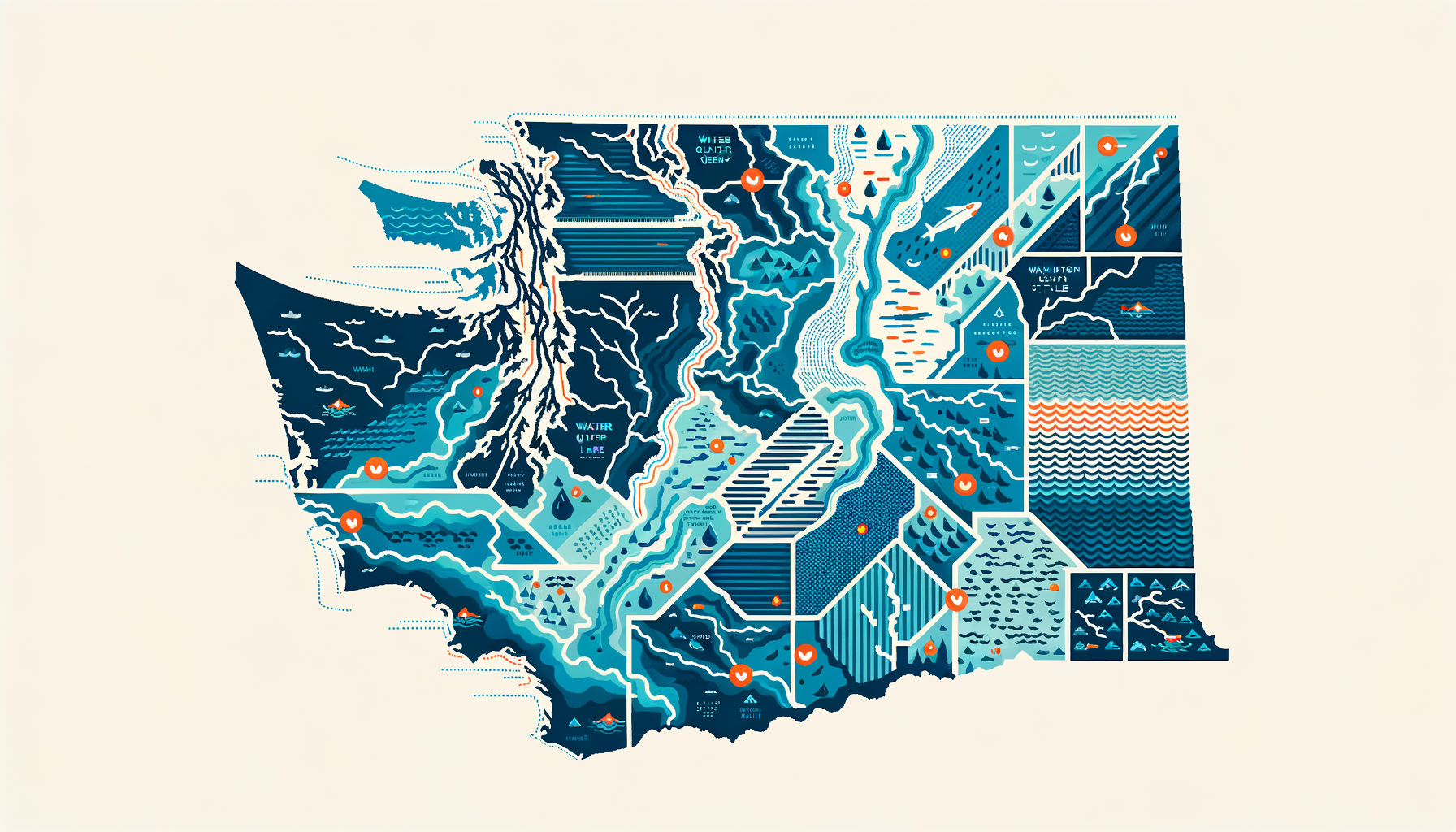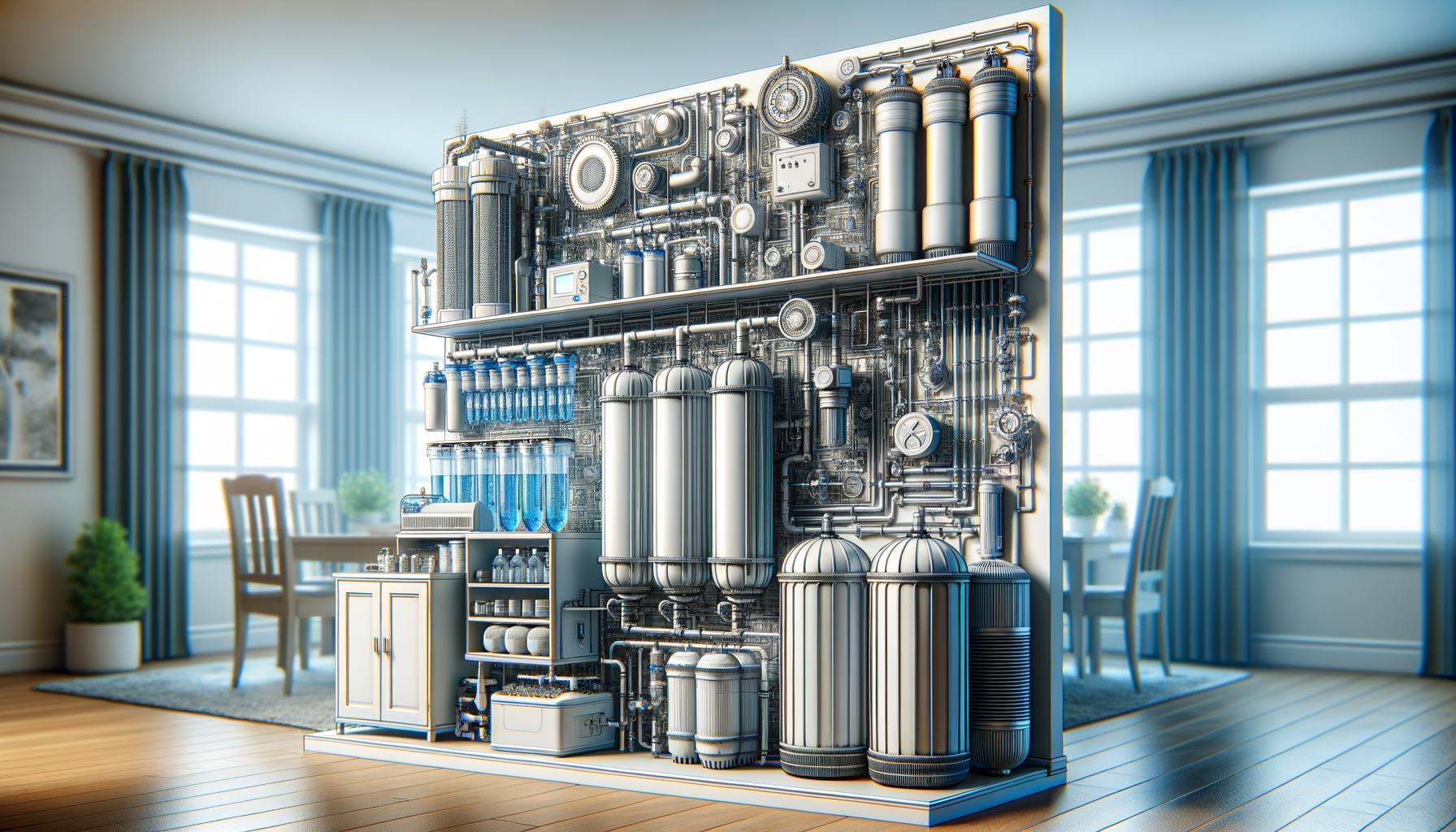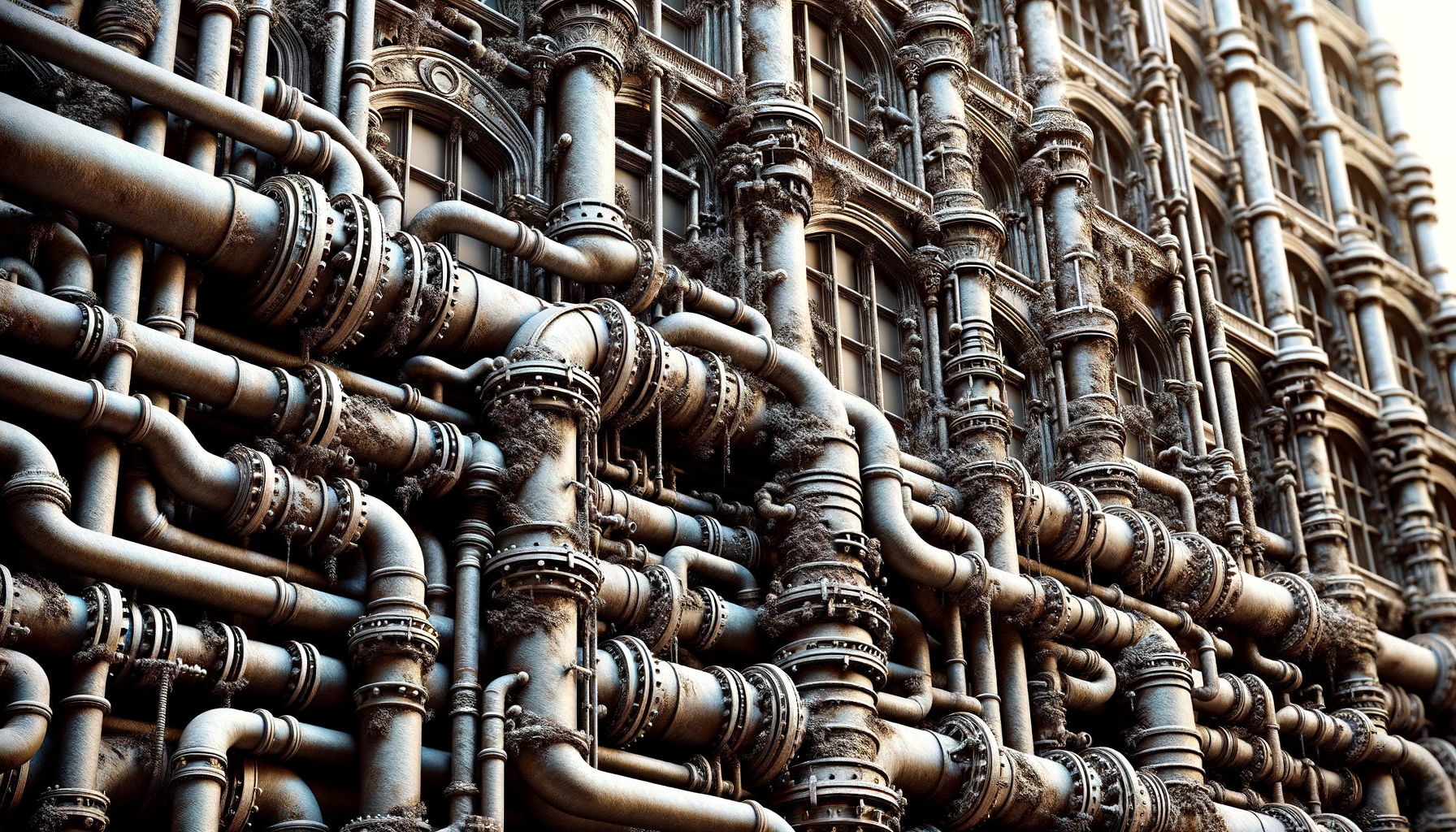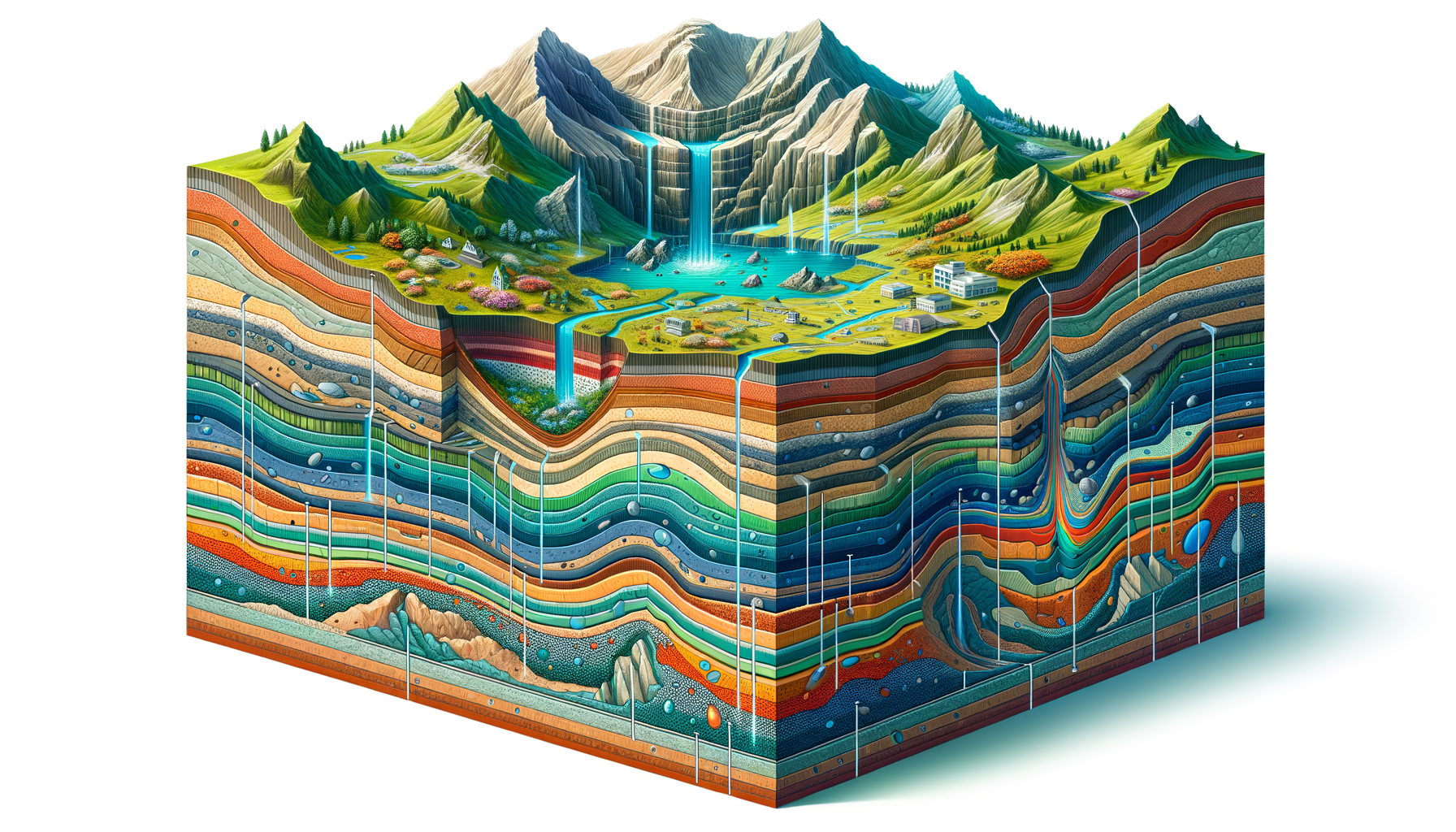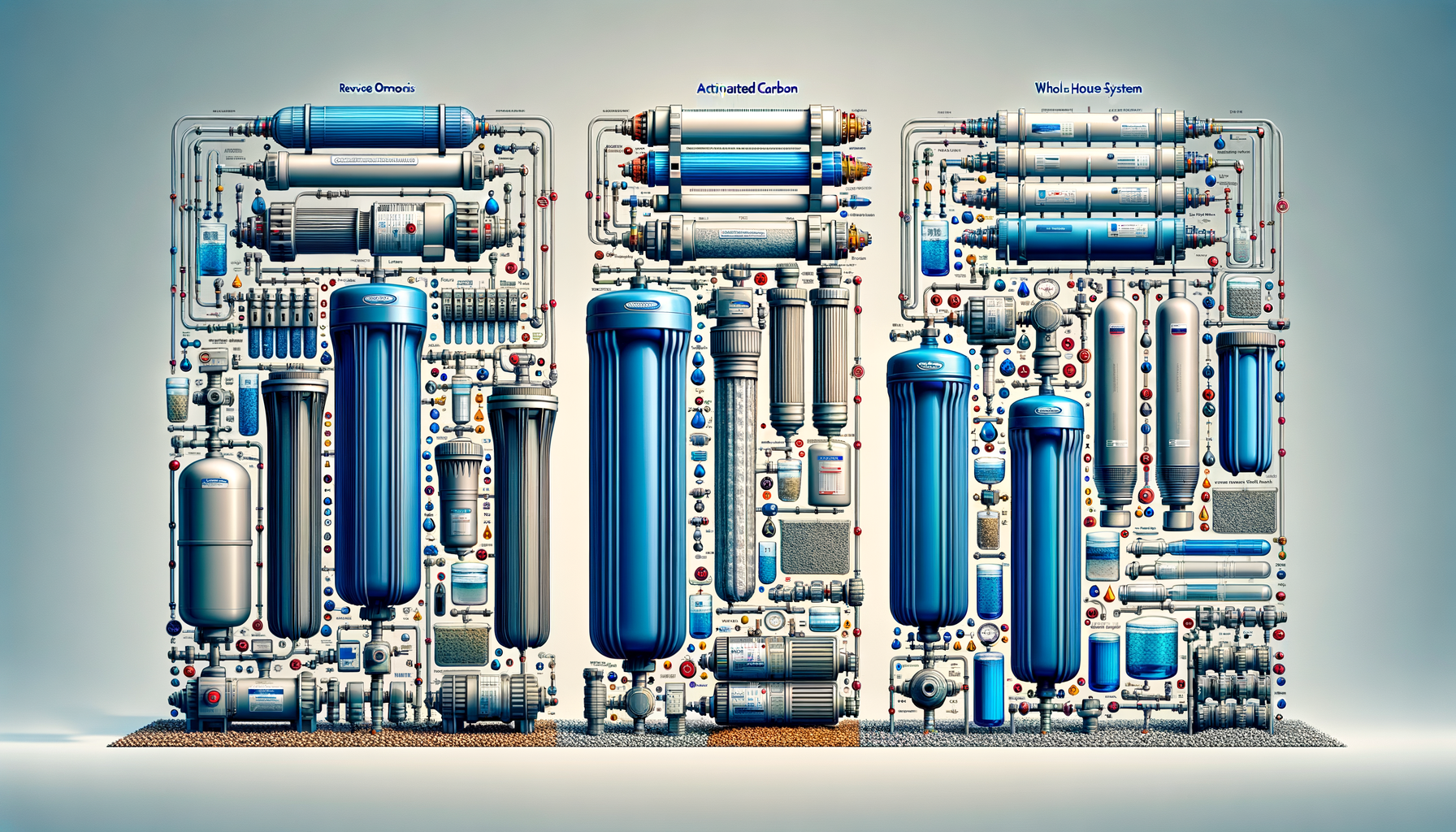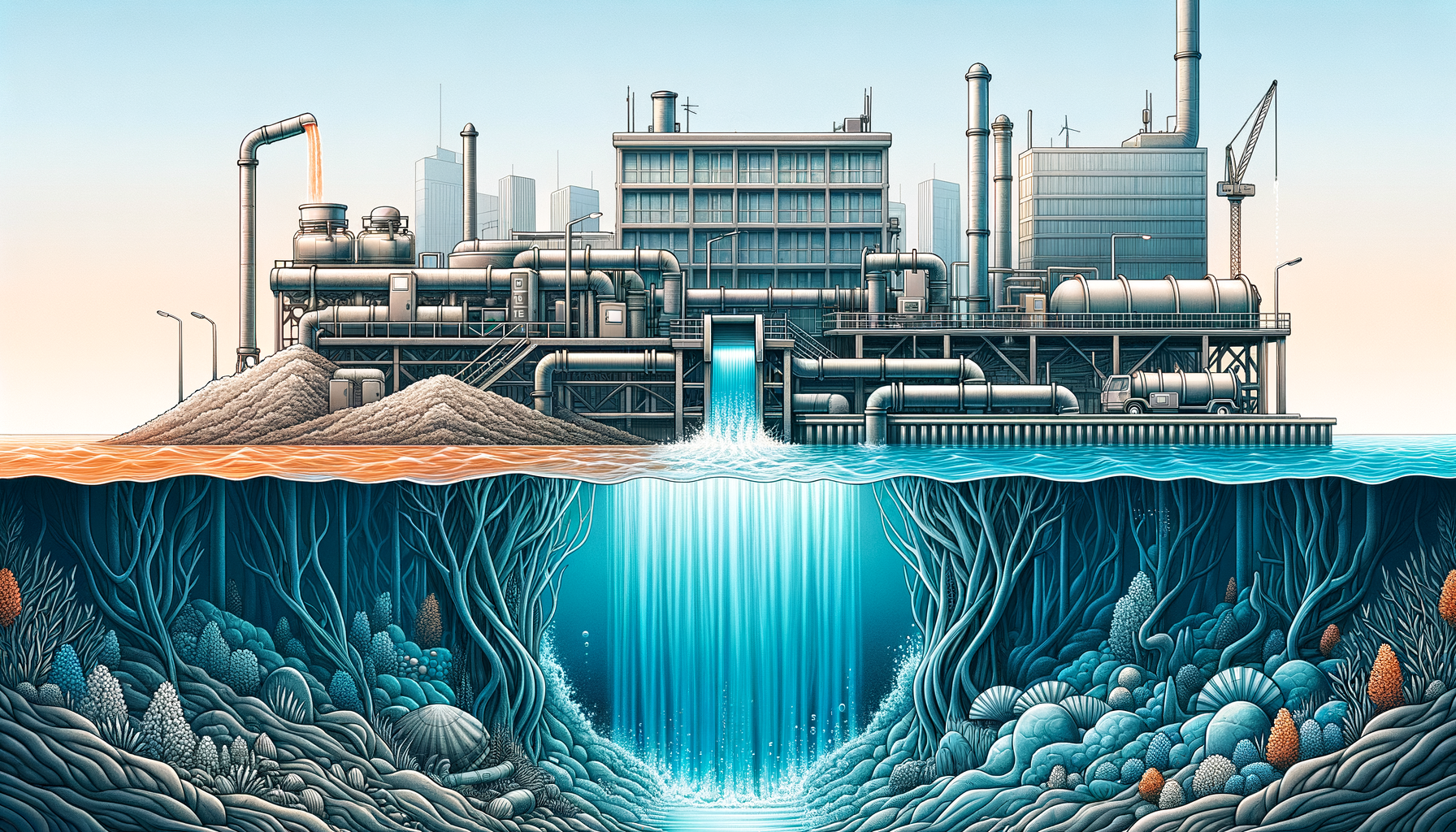Comprehensive Guide to Water Quality in Washington State: Contaminants, Issues, and Water Filtration Solutions
by Ryan Moreau / updated March 5th, 2025
Washington State is celebrated for its abundant water resources—from the majestic Columbia River and the tranquil Puget Sound to the intricate network of lakes and aquifers that span the region. However, despite this wealth, Washington faces significant water quality challenges stemming from industrial activities, agricultural practices, and urban development. In this comprehensive guide, we delve into the common contaminants in Washington’s water, regional water quality challenges, and effective filtration solutions. Begin by using our Water Quality Tool to receive a customized analysis of your local water conditions.

Overview of Washington’s Water Sources
Washington’s water supply is as diverse as its landscapes. Key sources include:
- Rivers and Streams: The Columbia River, Snake River, and countless streams provide water for municipalities, agriculture, and hydroelectric power.
- Puget Sound: This estuarine system supports both ecological diversity and serves as a crucial water source for surrounding communities.
- Glacial and Alpine Lakes: Bodies like Lake Washington and Lake Chelan offer recreational opportunities and drinking water.
- Groundwater Aquifers: Many rural and urban areas rely on aquifers, such as the Spokane Valley-Rathdrum Prairie Aquifer, for their water needs.
Ensuring the purity of these water sources requires diligent management and advanced treatment solutions due to the state’s varied geography and industrial footprint.
Common Water Quality Contaminants in Washington
Washington’s water sources may contain various contaminants resulting from industrial discharges, agricultural runoff, and natural geological factors. To better understand what may affect your area, start with our Water Quality Tool and review these prevalent issues:
1. Nitrates
Elevated nitrate levels are often found in agricultural regions like the Yakima Valley due to fertilizer runoff and livestock operations. High nitrate concentrations pose health risks, particularly for infants.
Water Filtration Options for Nitrates: Reverse Osmosis Water Filters
2. Arsenic
Arsenic naturally occurs in the geology of Washington, especially in areas with volcanic rock. It can leach into groundwater, affecting wells throughout the state. Long-term exposure increases risks of cancer and cardiovascular disease.
Water Filtration Options for Arsenic: Reverse Osmosis Water Filters.
3. Lead and Copper
Aging infrastructure in cities like Seattle and Spokane can result in lead and copper leaching into the water supply. Corrosion in old pipes is the primary cause, necessitating regular monitoring.
Water Filtration Options for Lead and Copper: Activated Carbon Water Filters, Reverse Osmosis Systems
4. Per- and Polyfluoroalkyl Substances (PFAs)
PFAs contamination has been detected near military bases and airports in Washington due to the use of firefighting foams. These “forever chemicals” are linked to adverse health effects, including hormone disruption and immune system impairment. For more information, visit the EPA PFAs Tools and our PFAs Contamination Guide.
Water Filtration Options for PFAs: Activated Carbon Filters, Reverse Osmosis Systems
5. Pesticides and Herbicides
Intensive agriculture in regions like the Columbia Basin introduces pesticides and herbicides into water sources. Chemicals such as atrazine have been detected in both surface water and groundwater, impacting human health and aquatic life.
Water Filtration Options for Pesticides and Herbicides: Reverse Osmosis Systems, Activated Carbon Filters
6. Radionuclides
Areas near the Hanford Site, a former nuclear production complex, may experience radionuclide contamination. Exposure to radionuclides can increase the risk of cancer and kidney damage.
Water Filtration Options for Radionuclides: Reverse Osmosis Systems, Ion Exchange Filters
7. Microbial Contaminants
Flooding and runoff can introduce bacteria, viruses, and parasites into water supplies, particularly affecting private wells. Microbial contamination can cause gastrointestinal illnesses.
Water Filtration Options for Microbial Contaminants: UV Water Purifiers, Reverse Osmosis Systems with UV stages
8. Mercury
Industrial processes and atmospheric deposition contribute to mercury in Washington’s water bodies. Mercury bioaccumulates in fish, posing risks to humans and wildlife upon consumption.
Water Filtration Options for Mercury: Activated Carbon Filters, Distillation Systems
9. Chlorine and Disinfection Byproducts
Many municipal systems use chlorine for disinfection, which can form harmful byproducts like trihalomethanes (THMs). Long-term exposure is linked to increased cancer risks.
Water Filtration Options for Chlorine and Disinfection Byproducts: Activated Carbon Filters
Regional Water Quality Challenges in Washington
Washington’s varied ecosystems and industrial sectors create specific regional water quality challenges. According to the EPA and the Washington State Department of Ecology, key issues include:
1. Puget Sound Basin: Urban Runoff and Pollution
The densely populated Puget Sound region faces challenges from urban runoff carrying oil, heavy metals, and other pollutants into waterways. This impacts both water quality and marine life.
2. Eastern Washington: Agricultural Contaminants
Areas like the Yakima and Columbia Basins are agricultural hubs where fertilizer use and livestock operations contribute to nitrate and pesticide contamination in both surface water and groundwater (EPA – Nutrient Pollution).
3. Hanford Site: Nuclear Waste Legacy
The Hanford Nuclear Reservation has left a legacy of radionuclide contamination. Ongoing cleanup efforts aim to prevent pollutants from reaching the Columbia River and affecting downstream communities.
4. Mining Regions: Heavy Metals
Historical mining activities, particularly in the Northeast Washington Mountains, have introduced heavy metals like lead, arsenic, and mercury into local waterways.
5. Coastal Areas: Saltwater Intrusion
Over-pumping of groundwater in coastal communities can lead to saltwater intrusion, contaminating freshwater aquifers with seawater.
General Water Characteristics in Washington
Washington’s unique climate and geology influence the general characteristics of its water. Recognizing these traits is essential when choosing appropriate water treatment solutions:
1. Water Hardness
Water hardness varies across Washington. Western regions generally have softer water due to abundant rainfall and surface water sources, while eastern areas relying on groundwater may experience harder water with higher mineral content.
Hard water can cause scale buildup in plumbing and reduce the efficiency of appliances. If you’re dealing with hard water, consider installing a water softener. Unsure which system suits your needs? Use our Water Softener Calculator for personalized recommendations.
2. pH Levels
Washington’s water sources can vary in pH due to natural factors. In some areas, water may be slightly acidic, leading to corrosive conditions that can leach metals from pipes.
- Acidic Water: Water with a low pH can corrode plumbing systems, releasing metals like lead and copper.
- Alkaline Water: High pH levels can cause aesthetic issues such as bitter taste and scaling.
To address pH imbalances, consider installing an acid neutralizer or a pH adjustment system.
3. Silica Content
Some regions in Washington have water with high silica content, which can cause scaling and deposits on fixtures and appliances. Silica is challenging to remove and may require specialized treatment.
Water Filtration Options for Silica: Ion exchange systems or reverse osmosis can help reduce silica levels.
4. Temperature Variations
Seasonal temperature changes can affect water quality, particularly in surface water sources. Warmer temperatures may promote algal blooms, affecting taste and odor.
- Algal Blooms: Can produce toxins and affect water treatment processes.
- Cold Water Temperatures: May lead to increased corrosion rates in certain plumbing materials.
Activated carbon filters can help address taste and odor issues caused by organic compounds.
Utilizing the Water Quality Tool for Washington Residents
Stay informed about your local water quality with our Water Quality Tool. Washington residents can:
- Enter their zip code to access detailed information about local water sources and contaminants.
- Identify region-specific water quality issues affecting their community.
- Receive tailored recommendations for effective water filtration solutions.
Recommended Filtration Solutions for Common Washington Contaminants
Considering the common contaminants found in Washington’s water, the following filtration systems are highly effective:
1. Reverse Osmosis Systems
Reverse Osmosis (RO) Systems are capable of removing a wide range of contaminants, including nitrates, arsenic, lead, and radionuclides. They are suitable for both point-of-use and whole-house applications.
2. Activated Carbon Filters
Activated Carbon Filters excel at removing chlorine, volatile organic compounds (VOCs), PFAs, and improving the taste and odor of water.
3. UV Water Purifiers
UV Water Purifiers effectively neutralize bacteria, viruses, and other microorganisms, making them ideal for areas with microbial contamination.
4. Water Softeners
For regions with hard water, water softeners can prevent scale buildup and extend the lifespan of appliances.
Local Water Testing Services in Washington
To accurately assess your water quality, we recommend using SimpleLab for comprehensive water testing. Their easy-to-use kits and detailed lab reports provide valuable insights, enabling you to choose the most effective filtration solutions for your home.
Case Studies: Addressing Water Quality Issues in Washington
Understanding how others have tackled water quality challenges can guide your own efforts. Here are some notable examples from Washington State:
1. Tacoma: Lead Pipe Replacement Initiative
The City of Tacoma undertook an extensive program to replace aging lead service lines, significantly reducing lead exposure for residents. This proactive approach underscores the importance of infrastructure investment in ensuring water safety.
2. Yakima Valley: Nitrate Reduction Efforts
In response to high nitrate levels, the Yakima Valley implemented stricter regulations on agricultural practices and promoted the use of advanced filtration systems among residents relying on private wells.
3. Spokane River: Phosphorus Reduction
To combat algal blooms caused by excess phosphorus, the Spokane River community collaborated on improving wastewater treatment processes and educating the public on reducing phosphorus use.
4. Kitsap Peninsula: Addressing PFAs Contamination
Following the detection of PFAs near a naval base, local authorities provided affected residents with activated carbon filtration systems and worked on long-term solutions to remediate the contamination source.
Call to Action
Washington State’s rich and varied water resources are vital to its communities and ecosystems. Addressing the state’s water quality challenges requires informed action and the implementation of effective solutions. Protect your household by understanding your local water issues and choosing the right filtration systems.
Begin by entering your zip code into our Water Quality Tool to receive detailed information about your water supply. Explore our filter review articles to find the ideal system for your needs. Ensure the safety of your water with comprehensive water testing services, and enjoy peace of mind knowing your family has access to clean, safe water.

